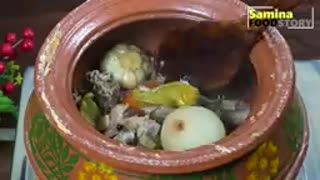Premium Only Content

How To Wash Your Hands SFBB Training UK
Proper handwashing is a fundamental part of the **Safer Food, Better Business (SFBB)** training in the UK. It plays a vital role in maintaining food safety and preventing the spread of harmful bacteria. Here's a step-by-step guide to washing your hands correctly according to UK food safety standards:
---
### **When Should You Wash Your Hands?**
Wash your hands:
- Before starting food preparation.
- After handling raw meat, poultry, fish, or eggs.
- After touching waste, rubbish bins, or cleaning chemicals.
- After using the toilet.
- After blowing your nose, sneezing, or coughing.
- After handling money.
- After smoking, vaping, eating, or drinking.
- After touching pets or any other potential contaminants.
---
### **Step-by-Step Guide to Handwashing**
#### **1. Prepare**
- **Remove Jewelry:** Take off rings, watches, and bracelets to clean all areas of your hands thoroughly.
- **Roll Up Sleeves:** Ensure wrists and lower arms are also accessible.
#### **2. Wet Hands**
- Turn on the tap and wet your hands with clean, warm running water.
#### **3. Apply Soap**
- Use liquid soap (preferably antibacterial in food preparation areas).
- Avoid bar soap as it can harbor bacteria.
#### **4. Lather Thoroughly**
Rub your hands together to create a lather, paying special attention to:
- **Palms**: Rub both palms together in circular motions.
- **Back of Hands**: Rub the back of each hand with the opposite palm.
- **Fingers and Between Fingers**: Interlace fingers and scrub the spaces between them.
- **Thumbs**: Rotate each thumb in the opposite palm.
- **Nails**: Scrub under fingernails using a nail brush or by rubbing fingertips against your palm.
- **Wrists**: Scrub each wrist in a circular motion.
#### **5. Scrub for 20 Seconds**
- The process should take at least 20 seconds. You can time it by singing "Happy Birthday" twice.
#### **6. Rinse**
- Rinse your hands thoroughly under warm running water to remove all soap and loosened dirt.
#### **7. Dry**
- Use a disposable paper towel or an air dryer to dry your hands completely.
- Avoid using reusable cloth towels in food preparation areas as they can harbor bacteria.
#### **8. Turn Off the Tap Safely**
- Use the paper towel to turn off the tap if it's not automatic, preventing re-contamination.
---
### **Handwashing Facilities**
Under UK food safety regulations:
- Handwashing sinks must be available in food preparation areas.
- Sinks should have warm running water, liquid soap, and paper towels or air dryers.
- Handwashing areas must not be used for washing food or utensils.
---
### **Training Tips for SFBB**
1. **Visual Demonstrations:**
- Use posters or videos to demonstrate the correct handwashing technique.
2. **Regular Reminders:**
- Place signage near sinks to remind staff about proper handwashing.
3. **Practice Sessions:**
- Include handwashing practice in food safety training to ensure staff follow guidelines.
4. **Monitoring:**
- Supervisors should observe staff during busy periods to ensure compliance.
5. **Hand Sanitizers:**
- Use alcohol-based hand sanitizers (70% alcohol or higher) only as a supplement to handwashing, not as a replacement.
---
### **Why is Handwashing Important in SFBB?**
- Prevents the spread of bacteria like Salmonella, E. coli, and Norovirus.
- Reduces the risk of cross-contamination between raw and ready-to-eat food.
- Helps businesses comply with **Food Standards Agency (FSA)** regulations.
Would you like assistance with creating **handwashing posters** or training materials tailored to your team?
-
 7:58
7:58
HSESafetyInformation
2 months agoAuthentic Peshawari Rosh _ Namkeen Gosht Recipe __ Traditional KPK and Baluchistan
581 -
 52:11
52:11
BonginoReport
3 hours agoDHS Sec Noem ROBBED By Masked Man on Easter - Nightly Scroll w/ Hayley Caronia (Ep.31)
46.8K39 -
 LIVE
LIVE
The Jimmy Dore Show
2 hours agoHillary Calls for Imprisoning Hillary! Rogan MOCKS Douglas Murray! w/ Kari Simpson & Katie Pasitney
14,340 watching -
 1:13:46
1:13:46
Kim Iversen
4 hours agoKlaus Schwab Steps Down—But the WEF Agenda Marches On
53.9K58 -
 1:24:34
1:24:34
vivafrei
5 hours agoVan Hollen's Tax-Payer Funded Vacay! Canada Liberals are Absolutely INSANE! Hegseth Hit Piece & MORE
70K24 -
 LIVE
LIVE
LFA TV
1 day agoEurope’s Religious Revival | TRUMPET DAILY 4.21.25 7PM
341 watching -
 LIVE
LIVE
Quite Frankly
6 hours ago"Death of Pope Francis, Klaus Retires, Easter Review" 4/21/25
1,057 watching -
 LIVE
LIVE
2 MIKES LIVE
2 hours ago2 MIKES LIVE #208 Deep Dive Monday!
273 watching -
 29:31
29:31
Kimberly Guilfoyle
4 hours agoThe Great American Comeback, Live with Nick Adams | Ep215
57.8K15 -
 1:30:43
1:30:43
Redacted News
4 hours agoGlobalist Cabal Suffers MAJOR losses as WEF's Klaus Schawb out, WEF Pope Francis dies, and WHO caves
120K125